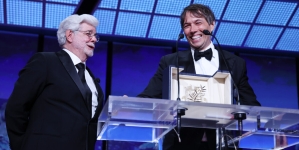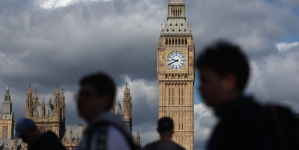-
Opinion | ‘Antiracism’ Was Never the Right Answer - October 5, 2023
-
A portion of Mulholland Drive, damaged by mudslides in winter storms, reopens - May 26, 2024
-
‘Maybe You Don’t Want to Win’ - May 26, 2024
-
Donald Trump Putting Law Enforcement in Danger: Attorney - May 25, 2024
-
Avoid the waters of these 5 L.A. County beaches this holiday weekend, public health officials say - May 25, 2024
-
Bawdy Comedy ‘Anora’ Wins Palme d’Or at Cannes Film Festival - May 25, 2024
-
Map Shows Heat Wave Zone Spread Into Five New States - May 25, 2024
-
Azusa police arrest suspected slingshot-wielding vandal - May 25, 2024
-
Donald Trump Hammers Judge Ahead of Jury Instructions - May 25, 2024
-
Sometimes U.S. and U.K. Politics Seem in Lock Step. Not This Year. - May 25, 2024
Opinion | ‘Antiracism’ Was Never the Right Answer
“The only remedy to racist discrimination is antiracist discrimination,” Kendi wrote, in words that would be softened in a future edition after they became the subject of criticism. “The only remedy to past discrimination is present discrimination. The only remedy to present discrimination is future discrimination.” In other words, two wrongs do make a right. As practiced, that meant curriculums that favor works by Black people over white people is one way to achieve that goal; hiring quotas are another.
Among the book’s central tenets is that everyone must choose between his approach, which he calls “antiracism,” and racism itself. It would no longer be enough for an individual or organization to simply be “not racist,” which Kendi calls a “mask for racism” — they must instead be actively “antiracist,” applying a strict lens of racism to their every thought and action, and in fields wholly unrelated to race, in order to escape deliberate or inadvertent racist thinking and behavior. “What we say about race, what we do about race, in each moment, determines what — not who — we are,” Kendi writes.
Kendi’s antiracism prescription meant that universities, corporations and nonprofits would need to remove all policies that weren’t overtly antiracist. In the Boston University English department’s playwriting M.F.A. program, for example, reading assignments had to come from “50 percent diverse-identifying and marginalized writers” and writers of “white or Eurocentric lineage” be taught through “an actively antiracist lens.” Antiracism also requires a commitment to other positions, including active opposition to sexism, homophobia, colorism, ethnocentrism, nativism, cultural prejudice and any class biases that supposedly harm Black lives. To deviate from any of this is to be racist. You’re either with us or you’re against us.
Yet, as the psychologist and author Jonathan Haidt points out, Kendi’s dichotomy is “incorrect from a social-science perspective because there are obviously many other remedies,” including ones that address social, economic and cultural disparities through a more fair distribution of resources.
When a Minneapolis police officer murdered George Floyd in May 2020, Kendi’s book, with its propitious, here-is-what-you-must-do-now title, became the bible for anyone newly committed to the cause of racial justice. Schools and companies made it required reading. So many campuses made it their “class read” “all-school read” or “community read” that the publisher created a full set of reading and teaching guides to help foster them. (Employees at the publishing house, Penguin Random House, were told to read it as the first “true companywide read” to begin “antiracism training mandatory for all employees.”) Universities used Kendi’s antiracist framework as the basis by which applicants’ required “diversity statements” would be judged.
Source link































